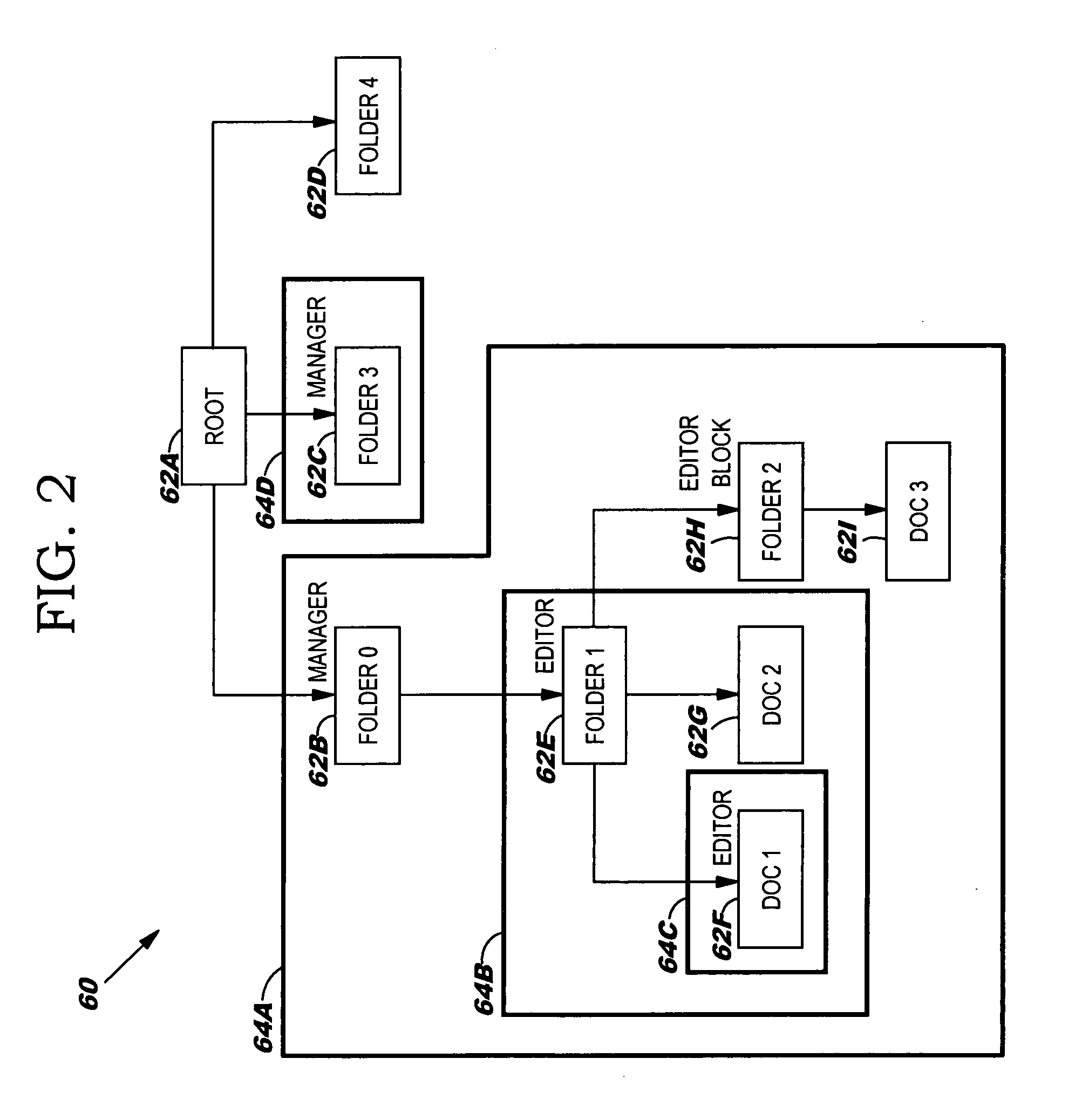Inherited role-based access control system, method and program product
a technology of access control system and role-based access control, applied in the field of inherited role-based access control system, method and program product, can solve the problems of difficult process of changing or changing an acl, difficult creation and/or maintaining an acl, and no existing solution provides an easy way to provide finely grained control of the inheritance concep
- Summary
- Abstract
- Description
- Claims
- Application Information
AI Technical Summary
Benefits of technology
Problems solved by technology
Method used
Image
Examples
Embodiment Construction
[0018] As indicated above, the present invention provides an inherited role-based access control system, method and program product. Specifically, under the present invention, role types are defined by association with certain permissible actions. Once defined in this manner, a role type can then be bound to “nodes” of a hierarchical tree that represent computer-based resources such as dynamic object spaces. Once bound to a node, instances of this role type are created that will be inherited by hierarchical descendants of that node unless a role type block (e.g., inheritance or propagation) has been established for the corresponding role type. The present invention also allows the computer-based resources to be defined as virtual or private. Virtual resources represent general protected concepts in the system instead of computer-based resources and are subject to be bound with roles, while private resources are not. That is, the private resources remain the “property” of the creatin...
PUM
 Login to View More
Login to View More Abstract
Description
Claims
Application Information
 Login to View More
Login to View More - R&D
- Intellectual Property
- Life Sciences
- Materials
- Tech Scout
- Unparalleled Data Quality
- Higher Quality Content
- 60% Fewer Hallucinations
Browse by: Latest US Patents, China's latest patents, Technical Efficacy Thesaurus, Application Domain, Technology Topic, Popular Technical Reports.
© 2025 PatSnap. All rights reserved.Legal|Privacy policy|Modern Slavery Act Transparency Statement|Sitemap|About US| Contact US: help@patsnap.com



